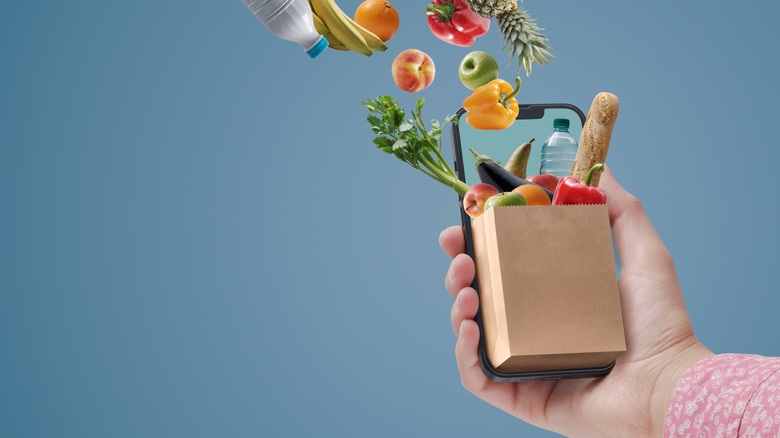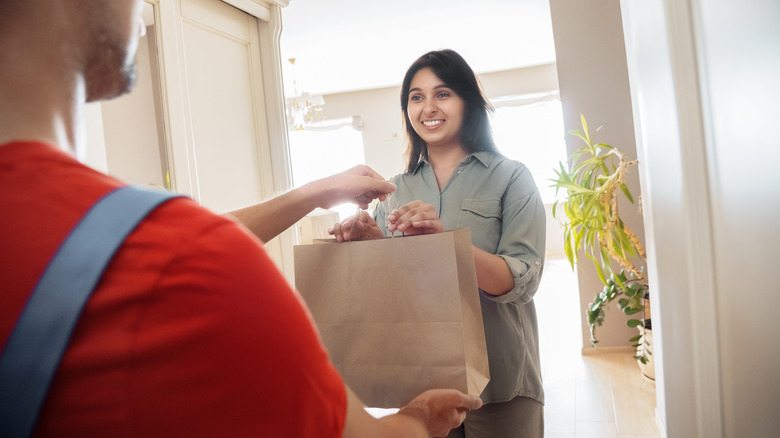New Findings Show Delivery Is Preferred For Online Grocery Orders
When your cupboards and refrigerator are looking a little bare, do you grab your reusable bags and head to the nearest supermarket, or do you sit down at your computer and log onto Instacart or Amazon Fresh? If you're like many shoppers, the COVID-19 pandemic may have altered your grocery shopping habits over the past few years. According to the United States Census Bureau, retail e-commerce reached new levels of popularity during the pandemic. Online sales shot up 43% in 2020 — from $571 billion in 2019 to more than $815 billion the following year.
Online grocery orders have remained a popular option among many Americans, even as the pandemic wanes, many folks return to in-office work, and in-store shopping is, once again, allowed. According to online retail analytics firm Brick Meets Click, June 2022 eGrocery sales were up 6% as compared to June 2021. It may be that, due to record-high inflation, shoppers are looking for all kinds of ways to save a buck, including online coupon codes and deals.
And, while there are a number of ways to retrieve groceries once they're purchased online, new data demonstrates that shoppers prefer to have them delivered directly to the home instead of picking them up at the store
At-home delivery is the preferred way for shoppers to get their goods
According to data from online retail analytics firm Brick Meets Click and eGrocery software developer Mercatus, online grocery sales in the U.S. dipped 1% in August 2022, as compared to the same month a year prior. However, they remained four times as high as they were in mid-2019. The data, analyzed by Grocery Dive, shows that Americans are still shopping online post-pandemic, and also that they have a preferred way of receiving those groceries: via delivery.
There are a few ways to receive online-purchased goods, the article explains. At the beginning of the pandemic, one popular option was curbside or in-store pickup, a method that remains popular. However, according to the data, home delivery accounted for nearly 41% of eGrocery sales last month, as compared to just 16% of eGrocery sales fulfilled by ship-to-home, in which the food arrives via a shipping service such as FedEx or UPS.
Since online grocery shopping shows no real signs of declining, Sylvain Perrier, president, and CEO, of Mercatus, advised traditional grocery stores and supermarkets to streamline online shopping as much as possible for their customers, in order to remain competitive with apps such as Peapod that have their own inventory (via digitaltrends). "Consider implementing a variable service fee structure that offers customers more control over the extra costs and grocers better ways to lower costs through operational efficiencies," he said in a statement.

